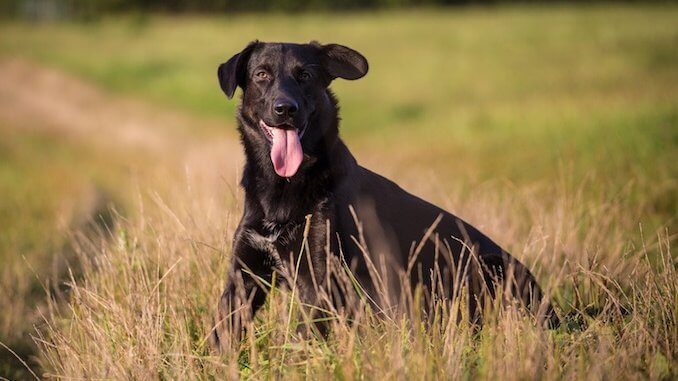
Let me introduce you to one of the sweetest mixes you might ever encounter—the Border Collie Lab Mix, affectionately known as the Borador. This medium-sized canine carries the loving traits of its parent breeds, the Border Collie and the Labrador Retriever.
Sporting a typically black coat with charming white accents on the chest and face, Boradors are a treat to the eyes and the heart of canine lovers.
So, stick with me as we uncover the ins and outs of living with a Borador, and why they might be the companion you didn’t know you were looking for. We’ll explore their temperament, needs, and how best to integrate them into various family dynamics.
TABLE OF CONTENTS
- Border Collie Lab Mix Quick Summary
- Border Collie Lab Mix Parent Breeds
- Physical Characteristics of the Border Collie Lab Mix
- Border Collie Lab Mix Personality and Temperament
- Border Collie Lab Mix Care Guide
- Borador Health Issues
- Should You Get a Border Collie Lab Mix?
- FAQs about the Border Collie Lab Mix
- Intelligence, Affection, and Energy: The Hallmarks of the Border Collie Lab Mix
- Other Labrador Retriever and Border Collie Mixes
Border Collie Lab Mix Quick Summary
Border Collie Lab Mix Parent Breeds
The border collie lab mix has likely existed for a long time, however, this mixed breed only became popular with breeders in the 2000s — when the Borador name was coined.
A cross between two Boradors is possible, but the traits of the offspring, such as appearance and temperament become less predictable in this process. To understand this mixed breed, let us discuss the parent breeds.
Border Collie
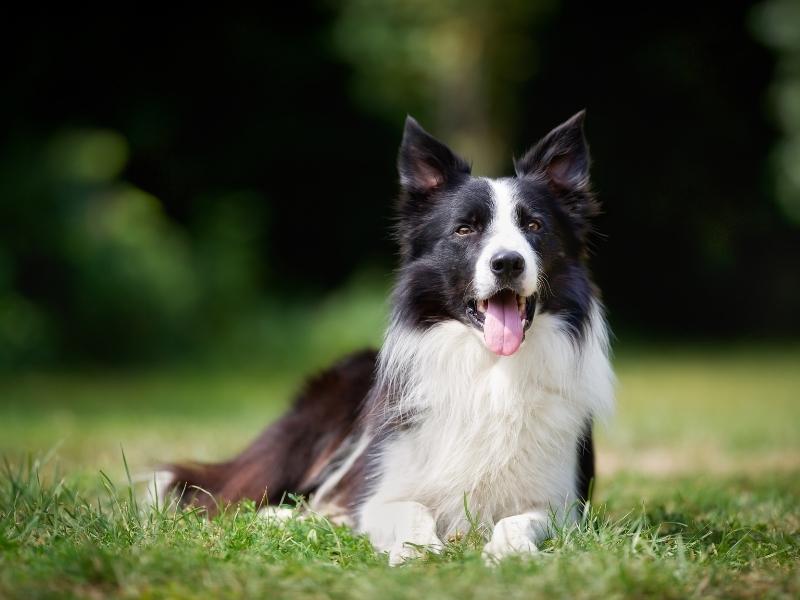
The journey into the world of Border Collies takes us back to the rugged landscapes of Scotland and England. This breed was developed to herd livestock, particularly sheep, under challenging conditions, thus their name “Collie,” which is Scottish for sheepdog. I found out that they are descended from landrace Collies, a type perfected over centuries to respond to the whistle or voice of their shepherd masters. The intelligence and endurance of these dogs are legendary, making them indispensable helpers on the farms and hills of their homeland.
Physical Characteristics
Talking about their looks, Border Collies are a medium-sized breed known for their distinctive appearance and agile build. They typically sport a double coat which can be either smooth or rough, and while black and white are the most common colors, they also come in various patterns and shades. This includes everything from blue merle to sable to chocolate. With their intense gaze, they seem always to be focused and ready for action, a trait that’s essential for their herding tasks.
Temperament and Behavior
Border Collies are a testament to the saying, “An idle mind is the devil’s workshop.” They are incredibly intelligent, perhaps one of the smartest dog breeds, and thrive on having something to do. As such, a Border Collie can get bored and develop undesirable behaviors if left without adequate mental and physical stimulation. However, when active and engaged, these dogs are remarkably versatile—excelling in everything from agility to obedience to search and rescue work.
The Labrador Retriever
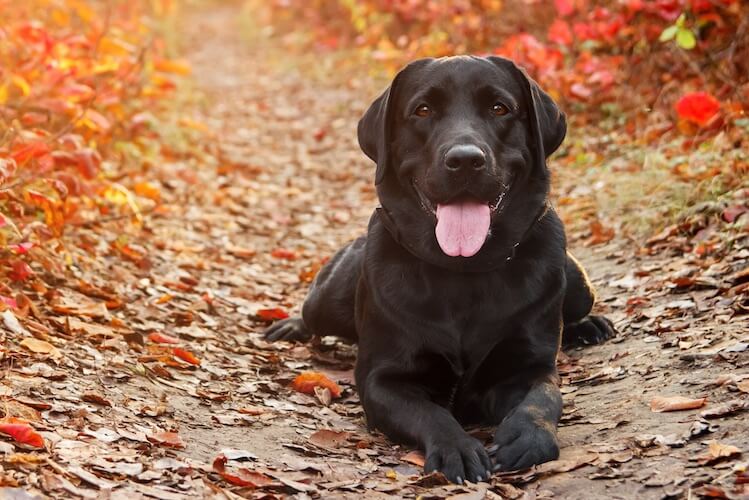
Let’s take a trip back to the chilly shores of Newfoundland, Canada, where our beloved Labrador Retrievers first paddled into the hearts of fishermen. These dogs were initially called St. John’s dogs, after the capital of Newfoundland. They were bred from local dogs and the Newfoundland dog, which is a different breed despite the similar name. Fishermen used them to haul nets, fetch ropes, and retrieve fish from the chilly North Atlantic waters. It wasn’t until they caught the eye of English nobles in the early 1800s that they were brought over to Britain, where they were refined and named Labrador Retrievers.
Physical Characteristics
Labradors are the poster dogs for friendliness, but let’s talk about what they look like. They’re sturdy, well-built, and athletic with a dense, water-repellent coat, which makes sense given their splashy history. They typically come in three colors: chocolate, black, and yellow. What’s striking are their kind eyes that seem to look right into your soul, and that smooth tail—often called an otter tail—that serves as a powerful rudder in the water.
Temperament and Behavior
Now, onto their temperament. Labradors are practically synonymous with the word friendly. They’re outgoing, eager to please, and get along with just about everyone—kids, other pets, even strangers. But they’re not just a friendly face; they’re also whip-smart and highly trainable. This makes them excellent for roles like guide dogs, search-and-rescue operations, and, of course, loyal family pets. They do need plenty of exercise, though, because a bored Lab is a destructive Lab. Keep them busy, and they’ll be the happiest pups on the block.
Physical Characteristics of the Border Collie Lab Mix
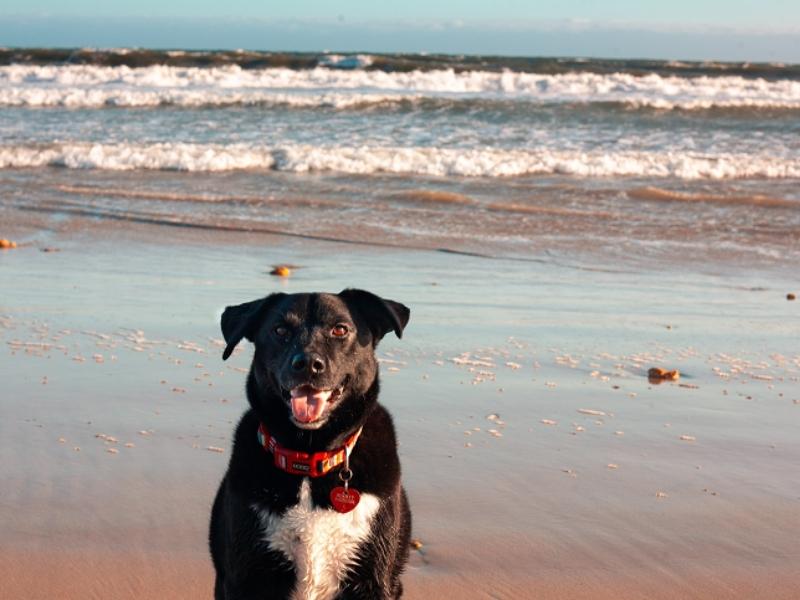
Picture this: a dog that combines the robust frame of a Labrador, which usually tips the scales between 55 and 80 pounds, with the more lithe Border Collie, generally around 25–45 pounds. What you get in a Borador is a charming, medium-sized pup weighing between 35 and 65 pounds, cloaked in a double-layered coat that can be either short and dense or luxuriously long.
Size and Weight
When you look at a Borador, you see a wonderful middle ground in terms of size. These dogs are medium-sized, but just how medium they are can depend a lot on their parents. You might notice the females are typically an inch shorter than the males, a subtle nod to their genetic lottery. They have a slightly stocky build—thanks to the Border Collie influence—and will generally reach their full size before their first birthday. It’s like watching a daily transformation from puppy to full-grown buddy in less than a year.
Coat
Moving on to their coat, I’ve noticed that most of these dogs sport a classic black coat with adorable white accents on their chest and face. But don’t be surprised if you spot a Borador with brown or yellow hues; that’s the Lab showing through. The coat itself is a marvel of nature’s design, featuring a plush bottom layer of short hairs topped with a protective layer of longer guard hairs. This can vary from short to long depending on which parent’s genes are more dominant, making each Borador a bit of a surprise in fur form.
Variations
And speaking of surprises, the variety you find in Boradors can be quite stunning. Since they inherit traits from both of their purebred parents, no two Boradors are exactly alike. You might find one with the weight and stature leaning more towards a Border Collie, while another might take after the Lab’s robust build. The coat length and color can also be a delightful mix, reflecting the diverse beauty of their lineage. It’s this unpredictability, combined with their delightful personalities, that makes each Borador uniquely enchanting.
Border Collie Lab Mix Personality and Temperament
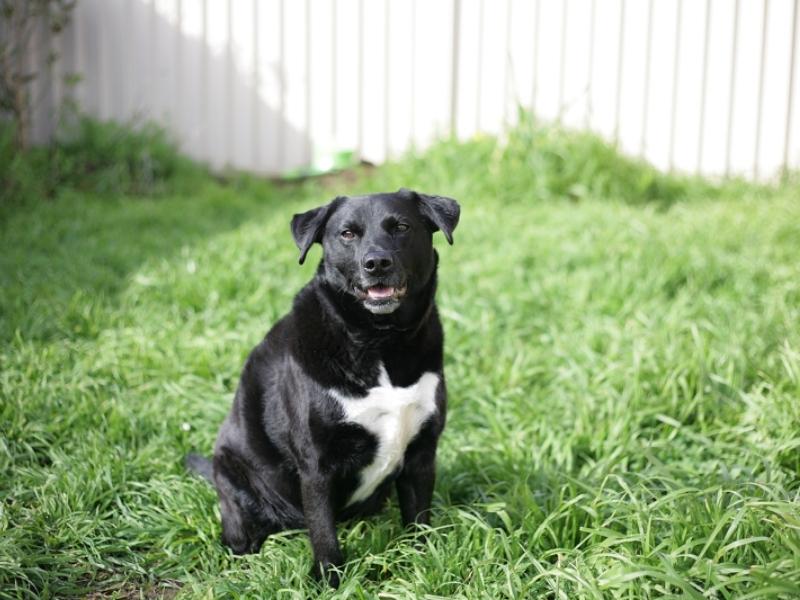
These dogs inherit all the best from their hard-working parents—intelligence, boundless energy, and an affable nature. As such, they are incredibly social.
During their puppy months, and frankly, throughout their lives, Boradors require a lot of activities to keep them busy—think plenty of chew toys, ongoing training, and playtime. I’ve found that this dog thrives on being part of the family’s daily routine.
While their charming demeanor has won over many households in America, I’ve noticed they’re not the best fit for everyone. If you work long hours, live in a cramped apartment, or don’t have much access to outdoor spaces, a Borador might not settle well. They need space and companionship to flourish, and without that, both you and your pup might find it challenging.
Border Collie Lab Mix Care Guide
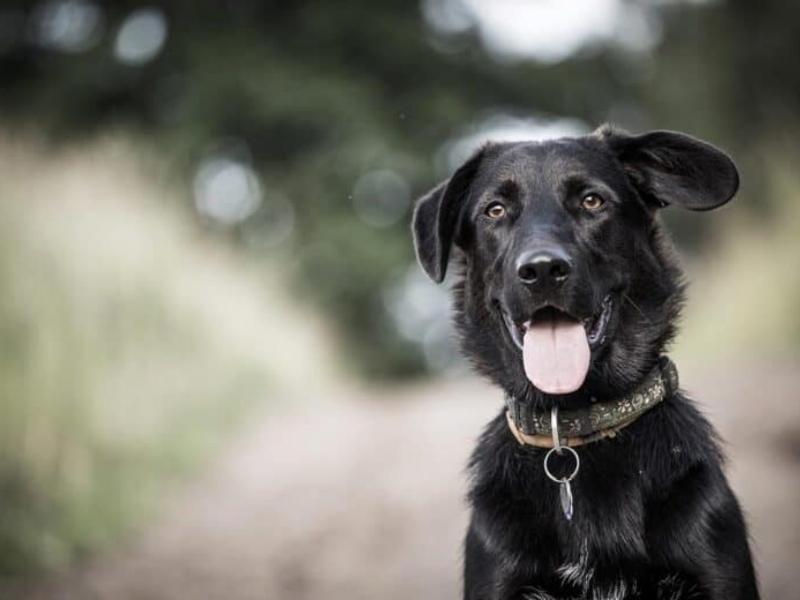
The most important care requirements for the Border Collie Lab mix are exercise and socialization. This dog has average feeding and grooming needs for a medium-sized dog. Let us discuss these care needs in detail.
Feeding
Getting their diet right is crucial for their health and happiness, so here’s a detailed look at how you can manage their meals.
Choose the Right Food
When it comes to feeding a Borador, I suggest going for high-quality dog food that supports their energetic lifestyle. Hence, look for brands that list real meat as the first ingredient, ensuring they’re getting the protein they need. It’s also important to choose a formula that’s appropriate for their life stage—puppy, adult, or senior—because their nutritional needs change as they grow.
Portion Control
Portion control is key to keeping a Borador in good shape. These dogs can be prone to obesity if overfed, especially since they’re such convincing beggars. I recommend following the feeding guidelines on the dog food package as a starting point, adjusting as necessary based on your dog’s activity level. For a highly active Borador, you might give it a little more, while a less active dog might need less to avoid weight gain.
Feeding Schedule
I suggest you stick to a regular feeding schedule to keep their digestion regular and prevent overeating. For puppies, divide their food into three meals a day. Once your Borador reaches about six months old, transition to two meals a day. This routine not only helps in managing hunger but also instills a sense of security and routine, making them less anxious about food.
Dietary Considerations
Every Borador is unique, and some may have specific dietary needs or sensitivities. I’ve learned it’s crucial to watch for signs of food allergies or intolerances, such as itching, digestive upset, or poor coat condition. If you notice any of these signs, consult your vet and switch to a limited-ingredient diet or a special formula recommended by the vet.
Treats and Extras
While treats can be a great way to reinforce training and strengthen our bond, be careful not to overdo it. Treats should make up no more than 10% of a Borador’s total calorie intake to prevent obesity. I also suggest using healthy options like carrots or apples instead of store-bought treats high in fat or sugar.
Grooming
Let me walk you through some essential grooming tips and practices that are beneficial for maintaining the well-being of this beautiful mixed breed.
Regular Brushing
Regular brushing is crucial for a Borador, given their potential to inherit the thick double coat of a Border Collie or the denser, shorter coat of a Labrador. I recommend brushing them at least two to three times a week to reduce shedding and prevent matting. This routine not only keeps their coat smooth and clean but also distributes natural oils, which enhance the health and sheen of their fur.
Bathing
While Boradors don’t need frequent baths, I’ve observed that bathing them every two to three months or when they get particularly dirty is adequate. Over-bathing can strip their coat of natural oils, leading to dry skin and irritation. Always use a dog-specific shampoo that’s gentle on the skin to avoid any allergic reactions or discomfort.
Nail Trimming
Nail trimming is another aspect of grooming that shouldn’t be overlooked. Long nails can cause discomfort and even lead to problems with walking. I’ve noticed that a Borador’s nails should be trimmed every month or so to keep them at a comfortable length. If you hear their nails clicking on the floor, it’s a good sign that it’s time for a trim.
Ear and Teeth Care
Taking care of their ears and teeth is vital for preventing infections and dental issues. Boradors can be prone to ear infections, especially if they inherit the floppy ears of the Labrador. Checking and cleaning their ears weekly with a vet-approved cleaner can prevent these problems. Likewise, regular teeth brushing several times a week is essential to maintain oral health and prevent tartar buildup, which I’ve found to be quite common in active breeds like the Borador.
Training and Exercise
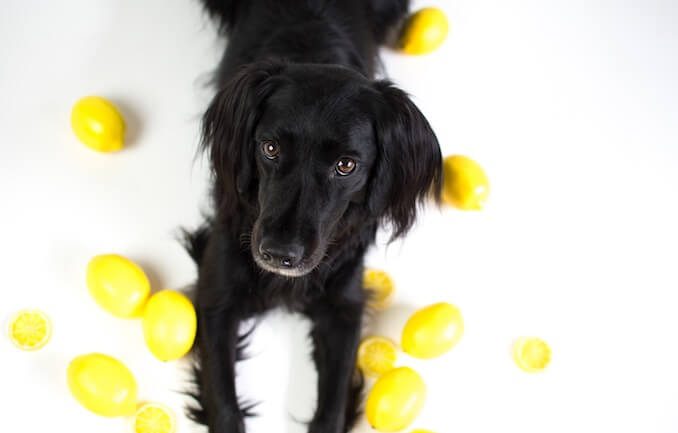
These energetic and intelligent dogs thrive when their minds and bodies are fully engaged. These insights into effective training methods will help you create a suitable training routine.
Training
I’ve observed that training a Border Collie Lab mix is an incredibly easy, exciting, and rewarding journey. Given that both parent breeds are known for their strong companionship and work ethic, the Borador inherits a keen responsiveness to training that makes the process enjoyable for both the dog and its family. I’ve also seen that spending lots of quality time with the dog during both the puppy and adult stages significantly helps in quick learning and adaptation to new tricks and commands.
One of the best approaches I’ve come across for training this breed is the use of positive reinforcement. This breed tends to have a lot of energy, and reinforcing good behavior with treats, praise, or play can help mitigate common issues like excessive chewing, barking, or attempts to escape. It’s amazing how quickly they respond to such positive feedback, eagerly anticipating their next chance to please.
Given their intelligence and eagerness to learn, owners can certainly challenge their Boradors with a variety of commands and tricks that might be too advanced for other breeds. It’s truly impressive how adept they are at picking up complex commands. However, if the dog shows any typical Collie herding behavior, such as nipping or trying to herd small animals and children, it’s crucial to discourage these actions gently and firmly.
Starting a training regimen early in the puppy phase is something I always recommend. This ensures that the Borador grows up to be an obedient and happy member of the family. I’ve noticed that those who begin training early often have smoother experiences integrating their dogs into various aspects of family life. Plus, it sets the stage for a well-behaved and sociable dog, making every interaction more enjoyable for everyone involved.
Exercise
From my observations, owners of a Border Collie Lab mix should be prepared to dedicate at least two hours each day to outdoor activities. This lively mix thrives on high-energy activities; they love running, hiking, and engaging in endless games of fetch. These types of vigorous exercises not only keep them physically fit but also mentally stimulated.
Ideally, splitting these activities into two exercise sessions throughout the day helps maintain the dog’s health and ensures they are pleasantly tired by bedtime. This breed does best when it has access to both a backyard for sporadic play throughout the day and a spacious indoor area for when it’s time to come inside.
For owners living in smaller spaces like apartments, keeping a Borador stimulated without a backyard can be challenging but manageable. I’ve noticed that rotating exercise and care duties among family members can effectively keep the dog from becoming bored. Increasing the time spent on outdoor activities is also a great strategy. An excellent exercise routine is crucial; it keeps the Border Collie Lab mix happy and well-behaved.
Socialization
Introducing them to a variety of people, animals, and environments from a young age helps them grow into well-adjusted adults. It helps mitigate any potential for shyness or aggression and enhances their innate friendliness.
Moreover, organized playdates with other dogs, visits to dog-friendly spaces, and even participation in puppy classes are excellent ways to socialize them. Each interaction plays a crucial role in shaping their ability to handle new encounters positively and calmly.
Mental Needs
The Border Collie Lab mix inherits a sharp mind from both of its parents, making mental stimulation just as important as physical exercise for this breed. To prevent boredom and its associated behaviors, it’s crucial to engage their minds continuously. From what I’ve learned, providing ample playtime, expanding their training beyond basic commands, and consistently using positive reinforcement for good behavior are effective strategies.
Borador puppies, in particular, have a natural inclination to chew. This can be a challenge, but it’s also a great opportunity to direct their energy positively. Providing a variety of chew toys can protect your household items from becoming unintended victims of their chewing. With consistent and clear training, Boradors quickly learn the rules of the house, including understanding which items are not meant for chewing. This type of mental engagement not only keeps them entertained but also enhances their learning and adaptation to family life, making them well-rounded and well-behaved companions.
Borador Health Issues
I’ve come to realize that while they are generally healthy, like any breed, they are predisposed to certain health issues. Let me walk you through some of the common health issues these dogs might face, detailing the symptoms and causes.
Hip Dysplasia
Hip dysplasia is a common concern in Boradors, inherited from their Labrador Retriever lineage. This condition involves an abnormal formation of the hip joint, which can lead to painful arthritis or even lameness in severe cases. Symptoms typically include difficulty in rising, reluctance to jump or run, a noticeable limp, or a swaying gait. The cause of hip dysplasia is largely genetic, though factors like improper diet, rapid weight gain, or excessive or insufficient exercise during puppyhood can exacerbate the issue.
Progressive Retinal Atrophy (PRA)
Progressive Retinal Atrophy is another health issue that can affect Boradors. This genetic condition gradually deteriorates the retina, leading to eventual blindness. Early signs include poor night vision and dilated pupils, which can progress to complete loss of sight. Since PRA is hereditary, it’s important for breeders to test their breeding dogs for this condition to prevent its transmission to offspring.
Collie Eye Anomaly (CEA)
Collie eye anomaly, often associated with the Border Collie parent, is a congenital condition that can vary in severity from mild to severe, potentially leading to blindness. Collie eye anomaly is detectable in puppies as young as a few weeks old. Symptoms can include visual impairment and, in severe cases, detachment of the retina. The cause of CEA is purely genetic and affected dogs should not be bred to prevent passing on the defect.
Allergies
Allergies are relatively common in Boradors and can manifest in various forms such as skin allergies, food allergies, or environmental allergies. Symptoms often include itching, redness of the skin, chronic ear infections, or gastrointestinal problems like diarrhea and vomiting. The causes can be diverse, ranging from allergens in their food, pollen in the air, fleas, or even household cleaning products. Managing allergies typically involves identifying the allergen through veterinary tests and adjusting the dog’s environment or diet accordingly.
Should You Get a Border Collie Lab Mix?
While this mix is a great addition to many homes, it’s not a great fit for certain caretakers and lifestyles:
Border Collie Lab Mixes are Suitable for:
The Border Collie Lab mix thrives in active environments. It’s especially suited for families who love the outdoors and are active. These dogs gel well with older children and are generally friendly toward other dogs. Further, they can even adapt to living with cats if properly trained.
Their intelligence and zest for life mean you’re in for a multitude of adventures that enrich family life. Drawing from the robust traits of both the Border Collie and the Labrador, this mix, with the right amount of care and attention, promises to be a cherished member of your family for years to come.
Border Collie Lab Mixes are NOT Suitable for:
Despite their many appealing qualities, Border Collie Lab mixes demand a lot from their caretakers. These dogs inherit their parents’ hardworking and intelligent nature, necessitating plenty of daily exercise. They’re not suited for families that are often away from home for long hours or those living in compact spaces without access to a yard.
FAQs about the Border Collie Lab Mix
How much is a Border Collie Lab mix?
The Border Collie Lab mix, often referred to as the Borador, is more affordable than its purebred parents due to its mixed breed status. Typically, the price for a Borador ranges from $200 to $500. This cost can vary based on factors such as the region where you’re purchasing the dog, the dog’s age, and the specific traits of the parents. Older Boradors might cost less since they are beyond their prime socialization and training periods. Additionally, adopting from a rescue can be a more cost-effective option than buying a new puppy.
How much does it cost to raise a Border Collie Lab mix?
Raising a Border Collie Lab mix generally involves standard expenses for a medium-sized dog. Annually, you can expect to spend between $1,000 and $1,500. This budget covers food, grooming, healthcare, and other typical expenses. The mix’s robust health contributes to these relatively consistent costs.
What is the average lifespan of a Border Collie Lab mix?
The Border Collie Lab mix typically enjoys a healthy lifespan of 10 to 15 years. This range is influenced by the dog’s health, lifestyle, and the care it receives throughout its life.
Are Border Collie Lab mixes easy to train?
Yes, Border Collie Lab mixes are known for their intelligence and eagerness to please, making them relatively easy to train. They respond well to positive reinforcement techniques such as treats and praise.
What are the common health issues of Border Collie Lab mixes?
While generally healthy, the Border Collie Lab mix can be predisposed to some common health issues from both parent breeds. These include hip and elbow dysplasia, allergies, and eye conditions such as progressive retinal atrophy.
How much exercise does a Border Collie Lab mix need?
A Border Collie Lab mix requires significant daily exercise due to its high energy levels. Ideally, they should have at least an hour of vigorous exercise per day, including walking, running, and interactive play.
How big do Border Collie Lab mixes get?
Border Collie Lab mixes typically weigh between 35 and 65 pounds and stand about 19 to 24 inches tall at the shoulder. The exact size can vary depending on which parent breed they take after more.
Are Border Collie Lab mixes good with children?
Yes, when properly socialized, Border Collie Lab mixes are excellent with children. They are known for their friendly nature and protective instincts. However, due to their herding heritage, they may sometimes attempt to herd small children by gently nipping.
Do Border Collie Lab mixes shed a lot?
Border Collie Lab mixes do shed, particularly if they inherit the thicker coat of the Border Collie parent. Regular grooming, including brushing a few times a week, can help manage shedding.
Can Border Collie Lab mixes live in an apartment?
Border Collie Lab mixes can adapt to apartment living if their exercise needs are met with regular outdoor activities. However, they are best suited to homes with more space, such as a house with a yard, due to their energy and size.
Intelligence, Affection, and Energy: The Hallmarks of the Border Collie Lab Mix
When you provide ample space, sufficient mental stimulation, and consistent physical activity, the Border Collie Lab mix becomes a faithful and engaging partner. This dynamic breed, often reflecting the Border Collie’s agility and the Labrador’s enduring patience, excels in various dog sports such as agility, obedience, and dock diving. This not only keeps them physically fit but also mentally sharp, ensuring they are well-rounded and content pets.
This breed’s adaptability to training and overall good health makes it a relatively easy companion to care for, despite its need for regular exercise. Their eagerness to learn and ability to quickly pick up new commands can make training sessions both rewarding and enjoyable. Additionally, their robust genetic makeup often results in fewer vet visits compared to some purebreds, making them a more sustainable choice for many families.
Whether you’re an active single, part of a couple or a member of a bustling family, if you’re ready to invest the time and energy, a Border Collie Lab mix could be the perfect furry addition to your life.
Other Labrador Retriever and Border Collie Mixes
If you’re interested in learning about other Lab mixes or Border Collie mixes, check out the hybrid dog breeds below.
Lab Mixes
- German Shepherd Lab Mix
- Pitbull Lab Mix
- Blue Heeler Lab Mix
- Golden Retriever Lab Mix
- Rottweiler Lab Mix
- Beagle Lab Mix
- Husky Lab Mix
- Australian Shepherd Lab Mix
- Labrabull
- Labradoodle Dog
- Boxador
- Mini Labradoodle
- Australian Labradoodle

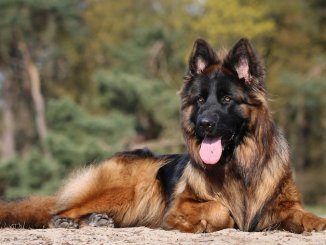
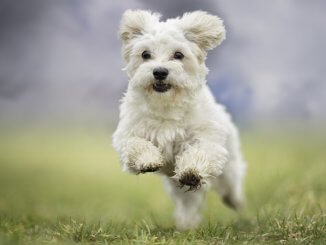
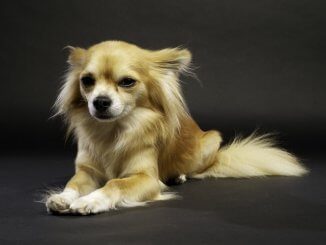
My doctor recommended a Service Dog as a diabetic alert dog. After doing a lot of research I chose a borador pup. After only a few days he knew basic commands. At 6 most he was doing his job and was registered as a service dog. Very intelligent and loyal. Perfect size for a female. Best dog I have ever had.
I have had my border collie/lab mix since he was a puppy. My late husband and I got him as a rescue. Shortly after getting him, my husband was diagnosed with lung cancer. Our puppy, Brady never got any formal training as neither my husband nor I had the time or energy. My husband passed away when Brady was 3. Even without proper training he has been a great comfort to me. He is now in the later years of his life, age 11. I dread the day when I no longer have him as a companion. He is the best dog. Very sociable with other dogs and is great around children. If you’re looking for a friendly, lovable, easy to train mixed breed, I would highly recommend you check this mix out.
Hi I have a borador he is a ball of energy but I have to agree that he is probably the smartest dog I’ve ever had and seen . He can be hard to deal with when you come home from work if you work a hard labor job like myself. But he keeps me going and I love him tremendously he helped me through a hardest time in my life and he was my second chance, so ironically his name is Chance and his nick name is orangutan lol but make sure you have a very active lifestyle and if you don’t have time to do the daily exercise then concider another breed. But definitely the top 2-3 dogs in the world for everyone so just make time for them and you’ll reap the rewards.
We rescued our borador Charlie at 13 weeks old. He has been the sweetest dog and easily outsmarts us. He loves attention and long walks. He even runs along with our mountain bikes. His favorite time of day is when you are throwing a tennis ball or stick. He socializes very well with other animals. We got lucky with a larger than average mix. He is 95 lbs and wears XX-large sweaters. His paws are to large for any boots we have tried in the snow. After 3 years with him we can’t imagine a different breed for our family!
Hi Camille!
Do you happen to remember how much Charlie weighed at 13 weeks? I just adopted my new Borador puppy, Cleo, from the humane society. She is 14 weeks old and weighs about 25 pounds already! We have been told she is large for her age, and are trying to estimate how big she will get! Thanks!
My 13 week Borador weighed 23lbs. He is now 21 weeks and weights 38lbs.
Bella is the 2nd borador I have owned. My first was named Shadow because she was always by our side. She was born to a well loved pet border collie. By the time we had her at 9 weeks the mother dog with family help had taught her basic house manners. She was nearly 17 when she passed away, a great loss to our family.
Our new dog had a labrador mother and was bred on a family farm. The dogs lived in the barn, handled frequently I was told by the children, all girls. She is a beautiful loving dog too. However she has her own agenda at times and cant understand why we don’t see things her way. She is now 9 months old, walks well on leash but very easily distracted. She is also highly reactive to loud noises and is wary of men outside the family.
We walk every day in as many different environments as Ican find. Her confidence is building and I am sure she is going to be just as loyal and loving as our first Borador. Whether she will ever be as calm remains to be seen. I have no regrets about our decision to stay with this mix of breeds. However no 2 will be exactly the same.
We just lost our Lab-Border Collie mix. We found her as a rescue in Texas and she proved to be the best dog we have ever had. She was an amazing dog. Smart, playful, social, and affectionate. We have been searching the Internet trying to find someone who is breeding this mix. If anyone knows of a breeder, please post or email!
There are 2 in the Memphis Tn shelter. We have their sister and she is amazing. We could only take one.
I have a 9 year old borador named Weezer. She was a rescue. I have had her since she was 3 months ago. She is playful, loyal, and the friendliest dog I have ever had. She is so smart and was easy to train. She gets along well with adults and children. She loves other animals.
The only downside is the she has a lot of allergies to foods, which I read is common. So she is on a high quality, non gmo, limited ingredient diet.
I would recommend this dog to anyone who wants a true companion that is loyal to the core. I love this dog so much. Weezer is part of my family as much as any human.
We got a border collie/lab mix on 8/5/2019 when he was 10 weeks. We’ve had him almost 4 months. We are currently trying to get the biting under control it’s been 13 years since we have had a puppy. This is our first time with this breed, he starts puppy training Wednesday and we have been training him, I am going to look into agility classes next!
Good luck Lori!
Easiest and most gentle way to stop biting is to gently hold down their tongue after they’ve bit you… with your thumb for a second or two. I also say the command “No Bite” when I did that
I just lost my black lab border collie. We got her very young appx at 3-5 weeks old. With our help we taught her in a day how to drink and eat out of a bowl and we also used an eye dropper to make sure she got the right amount. She never would stay in a crate as she would get out as sometimes she was too smart for her own good. Her Name was Tori and she was terrific and always wanting to learn. This is a breed I would gladly get again. I just hope the next one will be just as sweet and as easy to train as her. She was on the small end at her highest weight of 50lb but they say she was a miniture version.
I have a beautiful Borador. I got her at 11 weeks old and she has been a fantastic companion to me for my depression. She is super intelligent and at times can be overly playful and I’m surprised by her ability to be an apartment dog. The only issue we’re having is that she doesn’t eat. At times one bowl of food can last almost three days. I put her food down at the same times everyday but she just won’t eat. Anyone have similar issues?
With the Labrador mix, this is highly surprising! Labradors love their food, but on the other hand, Boxers can be sensitive. Perhaps she’s more Boxer than Lab. What food are you currently feeding? Have you tried alternative foods? Sometimes kibble isn’t that enticing for some dogs, whereas wet food can give off a stronger, aroma. You also have the option to feed raw?
I loved this article! I had a Black Lab Border Collie dog that I rescued. The first two owners didn’t understand the needs of this special dog. She passed away in November, 2019. She was the best dog that I have had and your article is so correct, easy to train, great with people, people pleasing, great with kids, loyal, loves to be busy, like some consistency, and just the most perfect dog. She is certainly missed as there will never be another one life this special dog.
My first Lab x collie was from an accidental litter after the neighbouring farm’s collie visited my friend’s pedigree lab, she was the runt of the litter and came to stay for a fortnight’s holiday whilst my friend went on holiday, needless to say she never went back as she became my JR terrier’s bestie. She was the most loving, loyal and friendly dog I had ever had as well as being a good ‘watch dog’ and letting us know if anyone was around.
About a fortnight after losing her I was given the opportunity of owning yet another of this wonderful mix. I called her Cadie. She is a very clever little girl, and very easy to house train and teach due to the fact that. She is total foodie and reward based training is brilliant for her, the description of this breed above is totally spot on!
I want a female. I will train her to be my Service Dog. We will be together 24/7
We adopted Charlie 3 years ago when he was 6 weeks old. He is a borderlab mix. We saw his mom but he gets his size from dad the golden lab. He weighs about 80 lbs. He has 2 different color eyes! Such a sweet personality! Devoted to my husband who has some memory issues! We adopted him for our granddaughters who can not live full time with a dog due to allergies. Best thing we did!!
Hi Sue. Could you answer a couple of questions on this breed, based on your experience? We’re looking to rescue a Borador puppy but have a couple of reservations. First, I’m concerned about the high energy level of this breed. How much exercise did you provide your dog daily? Next concern is for the shedding, how much does your dog shed? Other than that, this dog seems like a dream!
Does anyone know where I can find a breeder of Borador puppies? I would like to buy one for a family pet but cannot find a breeder. I love in Northern Illinois but am willing to drive to get one.
Does anyone recommend a male versus female? We are looking at adopting a rescue and I was curious if there are big differences in energy levels or temperament?